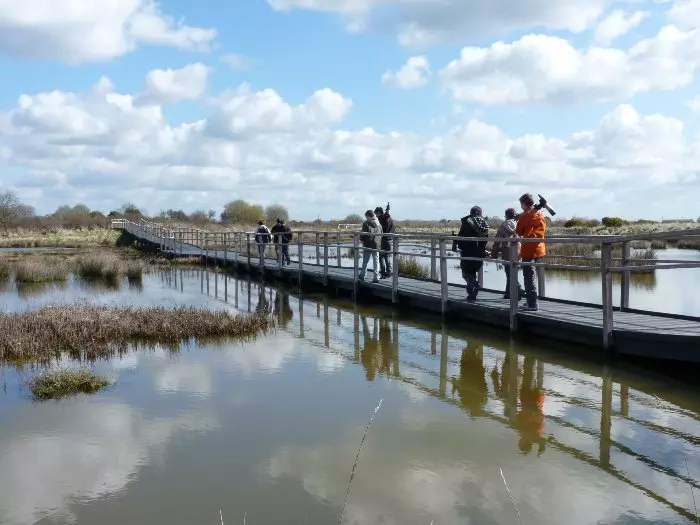
Environment and Biodiversity
Place
Morbihan, France
Sponsor
Dominique Dubeau
Grant(s)
30 000 € to the Selection Committee at 2008/05/27
Project leader
« I decided to support this project because it conserves a fragile ecosystem, promotes a logic of sustainable development, and contains a highly interesting educational dimension. Besides, it sets up a whole social mechanism relying on the services of a social and professional integration agency. »
Dominique Dubeau
The commune of Séné, in the Morbihan, teems with a very ancient historic past (Neolithic, then Gallic and Roman vestiges) which merges with that of Vannes, the neighbouring town. Alongside several associations, it also co-manages the nearby salt marshes. Together, they assume responsibility for enhancing and conserving this specific natural heritage. To develop it while making it more accessible to the public but without damaging it, they have set up a project to build a 125 metre long footbridge and a 60 m2 observatory.
A social and educational project
The goal of this project meets all the criteria set by the Veolia foundation: conservation of a fragile ecosystem, choice of "soft" building techniques using inert and stable materials - themselves derived from recycling other materials - innovation and aid for job placement.
Located in the heart of a natural reserve subject to powerful building pressures due to its nearness to Vannes, this project was analysed with the closest scrutiny for two years by scientists and administrative experts before being validated. It is under way today. The path leading to the footbridge and to the observatory has already been staked out and marked.
Besides its undeniable environmental assets, this project has an important social aspect, because it is carried out by a social and professional integration agency. Moreover, it will raise the awareness of the future visitors on issues concerning the protection of this specific environment. And finally, it will make this natural space accessible to all: the path and the footbridge are adapted to facilitate the movement of handicapped persons.

